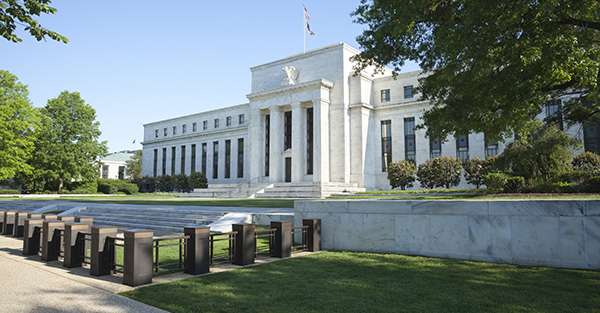
For the next two days, the Committee that controls the world will be huddled in the ivory tower known as the Eccles Building in D.C. There, ten people will tediously examine the data, look at the forecasts, and weigh options for an economy with a GDP of $17 trillion, a population approaching 320 million, and an official national debt of over $19 trillion.
This committee with unlimited, unquestioned authority will arbitrarily decide the course of the most important piece that ties the economy together: the U.S. dollar.
And as the U.S. dollar is the world’s reserve currency, by fixing interest rates they are effectively determining global monetary policy.
This group is the 10-person Federal Open Markets Committee (FOMC). Comprised of unelected bureaucrats, the April 26-27 meeting is the third get-together out of the eight scheduled for 2016.
Forget the ongoing NHL and NBA playoffs. The real show is there in D.C. at the intersection of Constitution Avenue and 20th Street, the Fed’s headquarters. There are sure to be some gamesmanship and fireworks – at least for the policy wonks among us.
Last week New York Fed President William Dudley, a permanent member of the FOMC and unmistakably the third most powerful Fed member behind chair Janet Yellen and vice-chair Stanley Fischer, made the case for a cautious approach to raising interest rates in this April meeting.
Caution in an interest rate rise is just the word used by Yellen last month following the FOMC’s second yearly meeting of 2016. But at April’s meeting within the Fed’s ranks there may be dissension at approaching hikes with caution. Minutes from the March meeting showed that vice-chair Fischer sees inflation as firming up – a case for an interest rate hike.
Also in Fischer’s corner, another case for raising rates is the recent performance of both the Dow Jones Industrial Average and S&P 500. Since the last FOMC meeting in mid-March, the markets are up 3.6% and 2.9%, respectively.
That said, stock markets are just one piece of the data-dependent FOMC. The U.S.’s rate of inflation, unemployment, including Yellen’s favorite, the Job Openings and Labor Turnovers Survey (JOLTS), and the potential for economic growth in the face of “headwinds”, another favorite reference – these are all on the table for debate.
While there may be a disagreement on the data, there will not be any disagreement on the methodology for understanding the data and thereby the economy. Because, despite what the committee members believe, they’re not economists. They’re statisticians.
Keynesian central planning will be at work. Like a mechanical engineer plugs data into an equation to better understand forces and stresses or a chemist uses a formula’s constants for testing of independent variables, the FOMC will take a supposedly scientific approach. They’ll reduce human action to numbers and plug this into a model. As if the subjective valuations and sometimes illogical decisions of humans can be perfectly captured in an aggregate model.
Unfortunately, while the discovery process will be a farce, the implications of the flawed Keynesian modeling will be very real. Regardless of the FOMC’s decision to retain the Fed Funds target rate at 0.25-0.50% or bump it up by another ¼ of a percent, money supply growth will continue. This translates into even greater misallocations of capital as this larger money pool translates into lower interest rates at both the producer and consumer levels.
Two things are likely. One, capital misallocation will continue. And two, it’s doubtful that the FOMC will hike rates in this April meeting. The Fed members are just too data-dependent, not fully convinced of the so-called U.S. “recovery.”
Many economists are pointing to June as the first rate hike. But that’s also not a lock, as the U.S. Presidential race heats up and the ever so politicized Fed will do their master’s bidding to not upset markets.
The greatest danger will be that the Fed waits. And then waits. And then inflation well above their 2% target kicks in, forcing their hand to raise rates.
If this is the case, the great market winners of 2016 will be gold and silver. Already we’re seeing this, as gold ticked up $5.00 and silver traded sideways in advance of the FOMC meeting on April 25th.
This will not be the case later in 2016. More money chasing the same amount of metal means, naturally, higher prices. We’d encourage readers to get into these metals now before the wise overlords at the FOMC cause them to skyrocket.
After all, the committee that controls the world is unable to control what matters to us all the most: individual action.
